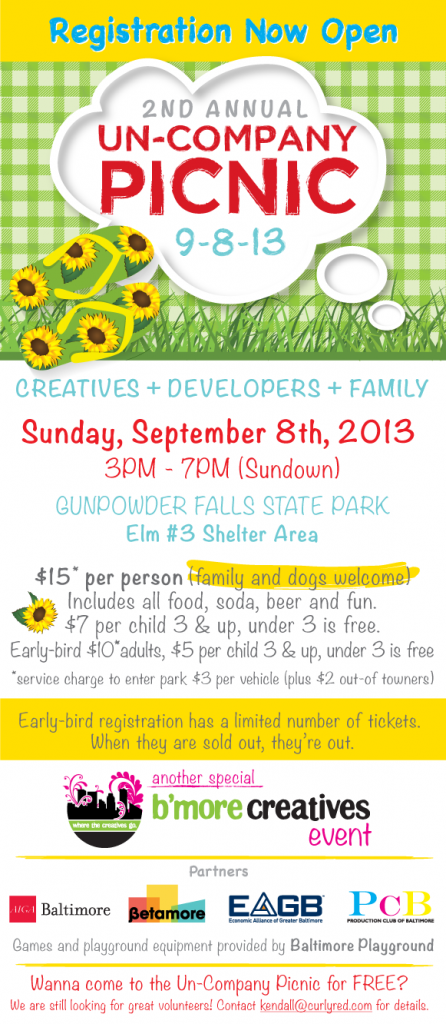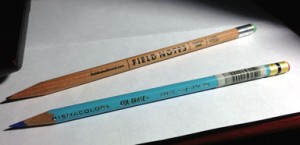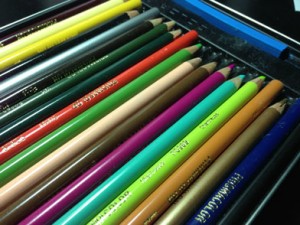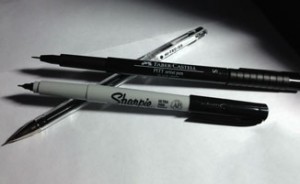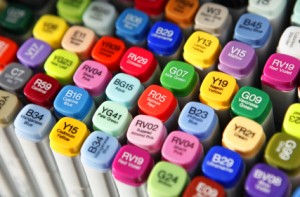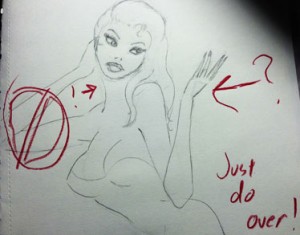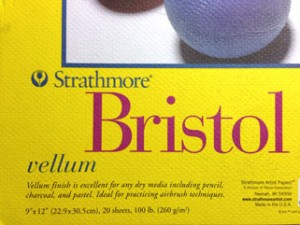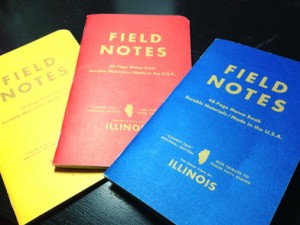Last converse, business-curious designers got together at Alexander’s Tavern in Fell’s Point to talk about starting a business. Courtney and Josh, two AIGA Baltimore board members who have some experience in this, led the discussion. Resources identified are listed at the end of the article.
When your job starts affecting your mental or physical health, you need a change. Whether that means finding a different employer or a different career depends on what part of your job is bringing you down. If you’re lucky enough to get paid for doing something you love, yet rarely find satisfaction in the work you’re being given, it’s time to look for someone else to give you work.
Tried that a few times? Now, you might start thinking about giving yourself work.
Before flipping your desk and marching out of the office, there are obviously some things to think about.
And What Do You Do?
Think of your elevator pitch. That quick answer when a stranger asks what you do. The clearer that answer sounds to you, the more confidence you have in your business model.
Whatever you are able to offer that another designer can’t, or doesn’t, is where to start in building a brand. A photographer who can create sets and costumes for his compositions has a desirable skill over a designer who primarily uses stock images. An illustrator with technical skills in perspective and proportion should consider herself more marketable than someone who depends on clip art. Design web-sites? That’s great. Develop them to current browser standards, including responsive design for mobile and tablets? That’s something I need: got a card?
Digital cameras and desktop publishing has put graphics design in everyone’s hands but not everyone means to make a whole business out of it. If you do, then identify your niche, the thing you do that makes you a designer, and make sure it’s in your marketing as prominently as possible.
Skills to Pay the Bills
Now that you’ve identified your strengths, how should you get paid for them? Finding a rate to establish your value is compounded by the need to stay competitive. To start, AIGA publishes an annual report on design salaries on its website. Our Converse moderators also identified online resources that help to calculate a reasonable price while also paying for overhead costs.
Don’t Get Over Your Head
Overhead costs, such as insurance, attorney fees, and marketing, take a large percentage of what a self-employed designer makes for each job, especially in the first few years. Thorough planning is the key. Courtney and Josh advised strongly against taking clients who are difficult solely out of desperation. Depending on the strength of your brand, the frequency of your work, and the effectiveness of your marketing, it’s best to have 3 to 6 months of savings on standby.
Get Started, Already
Once you have your business plan set up, now is the time to get the word out. Every event, every get-together, every happy hour is an opportunity to drop a mention of your design work, not to mention, a business card (you know, the one that clearly sums up your elevator pitch). Of course, you’re not actually a business yet, you’re just building up contacts and maybe, if you’re lucky, getting some freelance work. Using the resources gathered for your business plan, you’ll already know how to charge. Plus, you’ll build a portfolio of clients.
Right away, when dealing with clients, you’ll want to draw up a contract and require a deposit. This makes the project into a commitment for both you and your client.
If you’ve been successful and have carefully documented all transactions, you’ll see the income that will go back into taxes. If it’s significant enough where you can see savings through business write-offs, it’s likely time to get licensed.
Licensed to Bill
To make your business official, you need a license. Our moderators recommended getting advice from a lawyer throughout the entire process of building a business but this is likely when you’ll first need to talk to one.
In Baltimore City, licensing can be done at the Department of General Services; however, anyone in Maryland can go online at the Central Business Licensing Initiative (linked below).
If You Love It So Much, Why Don’t You Marry It?
Once the business is started, it becomes your life for a while. Whenever not actively engaged in a design, it’s best practice to use your time paying a lot of attention to furthering the business: don’t forget all the work you did to get it going. Continue to learn new skills, push them into your brand, and revise your rates accordingly. Develop new marketing and send it to past clients to remind them that they might need something from you. Go to every event with plenty of business cards and be ready to talk to everyone. Keep records for your accountant. Make an appointment to meet with your lawyer. And don’t be afraid to partner with a business coach to help you with your goals.
As with all of our Converse events, it’s difficult to include all the brilliant suggestions and statements made by attendees in such an open discussion, which is why it’s best to join us and experience it for yourself! Sign up for our mailing list and we’ll make sure you know what’s planned, including the details for our annual Baltimore Design Week, October 21-25. See you there!
Resources
Here’s a few helpful resources for getting your design business started, but if you have advice or other resources to share, please add them in the comments below.
Invoicing
- Hourly rate worksheet
- Freelance Switch Pricing Articles and Hourly Rate Calculator for Freelancers
Time, expenses, and invoicing tracking:
Licensing
Department of General Services: 301 W Preston St. Baltimore, MD, 8th floor
Maryland’s Central Business Licensing Initiative
Insurance
- Insurance and 401k (an AIGA Membership Benefit!):
- Construct a budget with a client
Other
- Kern & Burn: Conversations with Design Entrepreneurs by MICA grads Tim Hoover and Jessica Karle Heltzel.
- GoMedia podcast with Tim and Jessica.
